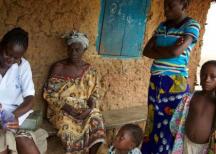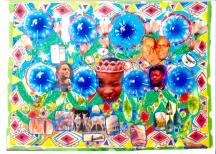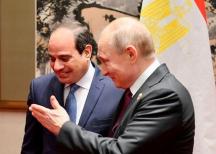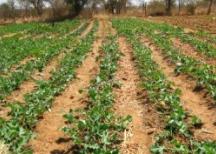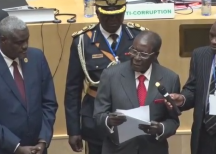
Salma Maoulidi looks at the future of Tanzania’s 50-50 Campaign as the country prepares for a general election. The campaign is meant to bring gender parity in parliament. Maoulidi argues the process is stalling as female politicians get caught up in a game where there is no women’s agenda and where women and women’s issues are largely absent from political debates.
The SADC Protocol on Gender and Development requires gender parity in political decision-making by 2015. In different African countries this has led to the launch of the 50-50 Campaigns, mostly by women’s rights activists. In Tanzania the 50-50 Campaign is spearheaded by the Feminist Activist Coalition (FEMACT) led by the Tanzania Media Women’s Association (TAMWA).
BOOSTING THE PROPORTION OF WOMEN MPS
Increasing the representation of women in decision making bodies to reflect the actual population composition is one aspect of this campaign. In the last Union Parliament about 30.7 per cent of members were women, while women constitute over 51 per cent of Tanzania’s population. The proportion of female members of parliament has risen from a decade ago when the representation of women was much lower and was mainly through presidential appointments. This changed after Beijing when the third phase government of President Benjamin Mkapa made a commitment to have at least one-third representation of women in all decision making structures starting at the village level, including in village assemblies and village governments.
To boost the representation of women, Tanzania implemented what is described as a mixed constituency and proportional representation system. Under this arrangement, special seats are set aside or women while female candidates in Tanzania can also contest seats in the National Assembly. Elected seats, however, are apportioned to parties based on how many votes they garner in elections. Increasingly, there are calls to revise this system since it does not always assure that the most competent candidates – or women – are selected by the party, a reality that activists feel may compromise advocacy for women and human rights at the expense of partisanship.
As mentioned above, most women came into political prominence after being nominated by the president to serve the national legislature under the ‘special seats’ arrangement. The Tanzanian constitution empowers the president to nominate ten members of parliament. There are, however, a number of women who have been able to contest on their own and defend their seats in successive elections. Until 2005 it was mainly middle-aged or mature women who ran for public office. This is rapidly changing with the increased participation of younger women in politics. To defend their eligibility to run for office, other factors aside from age such as education, public service record and money are becoming important determinants.
FALLING BEHIND OTHER COUNTRIES IN AFRICA
Tanzania has always had powerful and visible women participating in the political arena. Women such as Bibi Titi Mohammed, Sophia Kawawa, Bibi Kaya Omari, Bibi Asha Ngoma, Bibi Johari Yussuf and Lucy Lamek are household names in Tanzania. Many believe that Tanzania’s experimentation with socialist policies may have opened up and regularised women’s participation in political affairs and their appointment to decision making bodies earlier on in its history. What was also remarkable is that women who succeeded to rise up in the ranks were ordinary women from the lowest rungs of society, sometimes semi-literate but endowed with exceptional organising and oratory skills. Also an active, well-funded and devolved women’s wing of the ruling party was an effective mobilising tool such that the most visible political female face in Tanzania was often the chair or secretary general of the women’s wing, instead of the first lady as is the case in other countries.
Tanzania’s gender performance in representative politics has been seriously tested since democratisation in 1992. Rwanda now has the highest proportion of women in parliament in East Africa and also in the whole world, with 56 per cent of all MPs being female. This is a sharp increase from 49 per cent before the 2010 general elections. South Africa follows suit in Africa with 43 per cent female MPs. Other countries such as Mozambique and Swaziland, which adopted or adapted Tanzania’s electoral system to boost the representation of women, are also recording impressive gains for women.
The story is quite different in Tanzania. Following the initial processes of vetting candidates, all indications are that women’s political representation in the 2010 general elections will suffer a huge blow. Ananilea Nkya, the executive director of TAMWA, which spearheads the 50-50 Campaign, reveals that the expectation was for 40 per cent female representation in the 2010 elections, to meet the 50-50 target by 2015. The reality has been quite different. Although an increased number of women entered the political terrain seeking nomination from their parties to contest the 2010 elections, few were cleared by their parties to enter the race. In Zanzibar, for example, the opposition suffered more than the ruling party.
THE CASE OF ZANZIBAR
A number of prominent female opposition members such as Fatma Fereji, Fatma Maghimbi and Zakia Omar all from the Civic United Front (CUF) were not nominated at the initial stage to vie for political office even though these women performed well – and in some cases better – than more popular male colleagues. Maghimbi, who at one time was the Chief Whip in parliament, has since defected and joined the ruling party in protest.
To get a sense of the situation on the ground, Zanzibar, the semi-autonomous island state, is a useful example. Female legislators vying for the Zanzibar House of Representatives in this election are only 18 out of 124 eligible seats, while those vying to become councilors are 76 out of 309 constituencies.
Moreover, the quality of contestants who have been approved raises much concern in that they do not have the substance to be appointed for high political positions in Zanzibar’s cabinet or at the national level. Some of the veteran female politicians who formed part of the cabinet such as Asha Juma, head of the Ministry of Labour, Youth, Women and Children’s Development, or Samia Suluhu who heads the Ministry of Trade and Tourism, are running for parliamentary seats, which may make them ineligible to serve in the Zanzibar cabinet since members come from the House of Representatives.
Furthermore, unlike the past two multi-party elections in Tanzania, none of the political parties have fielded a female presidential candidate or a female running mate. In 2005, a female member of the Sauti ya Umma (SAU, or The People’s Voice) vied for the Zanzibar presidential seat. In 1995, Naila Jidawi, a businesswoman and prominent member of the opposition, became the first woman to vie for the Zanzibar presidency. Her candidature was defeated on a technicality. She had stood as a candidate under one political party and defected to another without formally resigning from the first. Jidawi served as an MP and was among three women who ran as running mates in past elections. The others are Anna Maulidah Komu, and Anna Senkoro. Jidawi’s boldness prompted women from the ruling party such as Amina Salum Ali, the first female minister of finance and now the African Union representative in the United States, to contest the presidential seat in 2000. The result was an open political campaign process within the ruling party.
THE MISSING GENDER LENS IN DEBATES AND MANIFESTOS
Another concern for FemAct and other human rights activists working on the 50-50 Campaign for the 2010 election has to do with the quality of the gendered analysis of issues that inform electoral manifestos and debates. Recently, the groups Gender Links and Gender and Media Southern Africa (GEMSA) Tanzania Network revealed that women are being left out of elections media coverage. Women are rarely part of political programmes. One current affairs programme, ‘This Week in Perspective’, makes use of just two female journalists – Halima Sherrif and Sakina Datoo (at least when she was still the chair of the Editors Forum). This is in sharp contrast to the many male media and academic sources that appear on the programme.
Women who dare to voice independent opinions especially outside the confines of political parties are targeted. The Executive Director of TAMWA and other female activists are currently under fire for exercising vigilance and voicing concerns over the manner in which elections are being run. Surely, the narrow way in which politics is defined leaves out a lot of issues that are central to women’s emancipation, such as personal law issues, reproductive health rights and women’s citizenship rights. Indeed, the feminist saying ‘the personal is political’ is missing from Tanzania’s political repertoire. Only the abstract dominates campaign speeches, not peoples’ lived realities. In such an environment, it is hard to bring any seriousness to ongoing campaigns from the sidelines or from within.
Political opposition is also checked by raising the threat of violence which could destroy Tanzania’s peaceful image. FemAct argues that political rhetoric inciting violence is sure to threaten the human rights of women. Likewise, the involvement of the military in the electoral process will equally threaten women. This has been demonstrated throughout the world whether the military is actively engaged in aggression or poses as a peace keeping force.
Equally disconcerting is the absence of women not just on political podiums but also in the content of political manifestos and rhetoric. A clear women’s agenda is lacking in most political parties. Perhaps the entering into the electoral contest dominated by men has skewed the focus of political campaigns. The battle is now between young men and old men, making women irrelevant in the equation except as supporters of warring political camps. It has largely been left to civil society organisations (CSOs) and, to an extent, the United National Development Programme (UNDP) which commonly supports the electoral process, to address this gender gap.
Nevertheless, numerous slogans and programmes have been prepared to promote women’s participation in politics. The slogan ‘women can’ is targeted at aspiring women politicians. Less emphasis has been on influencing the attitudes of male voters or male politicians, or of reforming the system that bars more women from contesting elections or entering the political process.
Shifaa Said of the Zanzibar Media Women’s Association (ZAMWE) criticises the nature of support obtained for civic education. ‘Most of the assistance targeting CSOs and women candidates came late and is paltry compared to the work that needed to be done at different levels,’ she said.
WHEN SCANDALS SHAKE GOVERNMENT IT'S WOMEN WHO PAY
Surely, the political landscape in Tanzania is changing rapidly since Beijing when gender activists voiced the need for greater parity in power structures. Our advocacy led to a commitment by the Mkapa government to increase women’s visibility in political structures. Although the measures were not radical, Mkapa set the groundwork for the appointment of women in non-traditional sectors, both in government and in politics.
His successor and current president Jakaya Kikwete could shake the political establishment by appointing women to powerful ministries such as finance, foreign affairs, education and good governance. The prospects looked good. Attention on the 50-50 Campaign during the 2010 elections seemed productive until the government and ruling party were shaken by a scandal in parliament resulting in the resignation of the prime minister. Following this event, Kikwete took no chances and reconstituted his cabinet by either leaving out key women or sending them back to ministries they have traditionally held. It was as if to signal that women were behind the near collapse of his government rather than the corrupt practices of some of his appointees.
Ever since, women have lost political ground. Unlike the 2000 and 2005 general elections, their numbers have been drastically reduced. Many parties failed to nominate or support female contenders. Unlike past years, the opposition did not put forth female running mates or contestants in key constituencies. While women gave ultimatums to the third phase government (and it is widely believed that the fourth phase government was voted in by women) they are virtually absent from the political landscape – physically, thematically and numerically.
Certainly, the 2010 elections provide us with much food for thought. How could our calls for women’s greater political participation fall on deaf ears considering the efforts made in the build up to the 2010 elections? Did our agenda become stale by virtue of time or was it overtaken by survival instincts in an atmosphere replete with political mistrust? How do we sustain the gains made instead of losing ground in the face of adversity? As Nkya from TAMWA admitted, ‘Until this time we have believed that our proximity and familiarity with the media has aided our advocacy efforts but as more media institutions are brought out by wealthy politicians they become a tool of domination and not liberation.’
BROUGHT TO YOU BY PAMBAZUKA NEWS
* © 2010 Salma Maoulidi
* Salma Maoulidi is a social justice and gender activist in Tanzania.
* Please send comments to [email protected] or comment online at Pambazuka News
- Log in to post comments
- 861 reads

